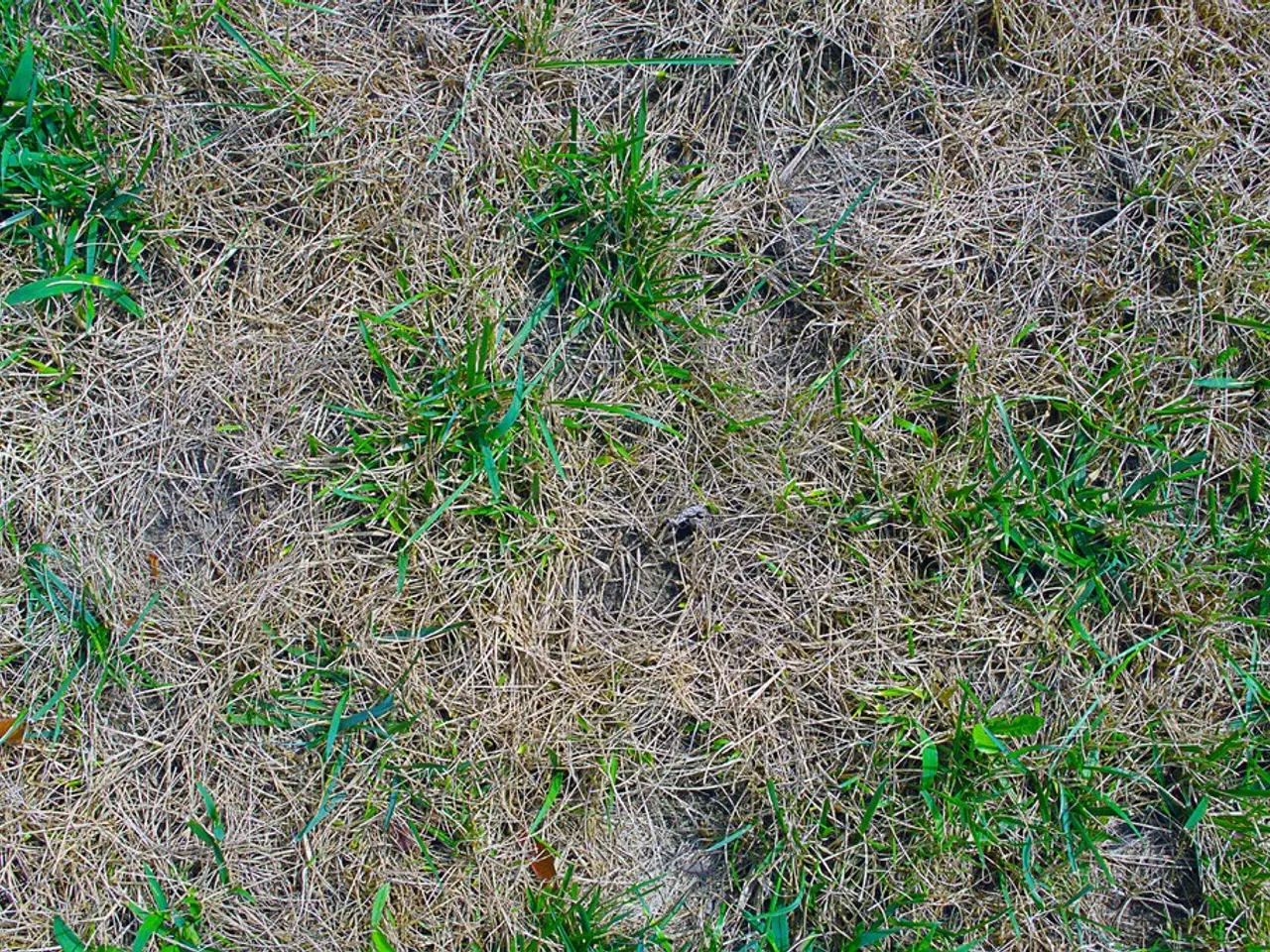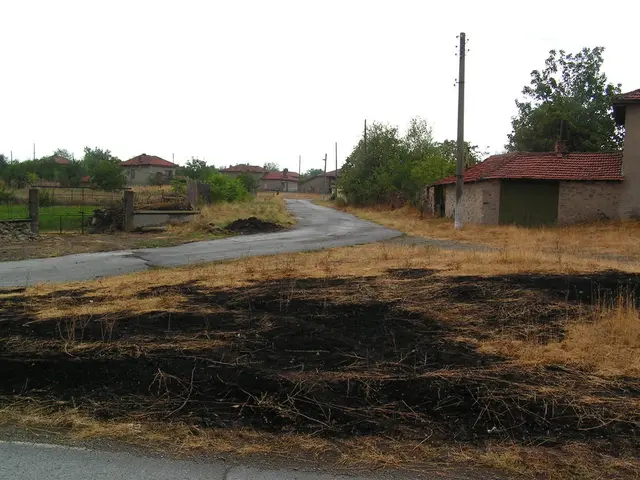Saving the Countryside: Britain's Indigenous Livestock Breeds Offer a Solution
In the rolling hills and verdant pastures of the United Kingdom, a new approach to land management is gaining traction. The use of native British livestock for conservation grazing is being heralded as a more ecologically compatible, sustainable, and biodiverse solution compared to the introduction of exotic species.
Jeremy Clarkson, a well-known figure from Diddly Squat Farm in Oxfordshire, has recently proposed the use of goats to clear brambles, arguing that they create more farmland. This idea is part of a broader movement towards utilising native breeds for conservation purposes.
Native British livestock, such as sheep, cattle, ponies, and goats, have evolved to graze in local habitats and can effectively maintain the balance of native vegetation. For instance, different native breeds of sheep have specific dietary adaptations, with New Forest ponies eating bracken, Fells, Dales, and Highlands coping with coarse reeds and rushes, and the Eriskay from the Hebrides being effective on Cumbrian fells.
The benefits of this approach are manifold. Native livestock create a patchwork of vegetation heights and bare ground, which is crucial for a wide range of wildlife species. This includes rare plants, reptiles, and invertebrates that depend on specific habitat structures. Moreover, native breeds often require less additional feed, making their grazing a "greener" option with lower carbon footprints and less resource input.
Cattle, in particular, are useful for grazing longer grasses and herbs, creating a more varied sward, which increases plant and insect numbers and diversity, and attracts more birds. More than 100 conservation projects across the UK use cattle for grazing, including longhorns, Red Devons, White Parks, Lincoln Reds, and various other breeds like Highlands, Belted Galloways, Shetlands, Red Polls, and Dexters.
Sheep, when properly managed and not too densely stocked, can effectively graze and create a diverse sward, increasing plant and insect numbers and diversity, and attracting more birds. Hebridean sheep are even used to create 'wigeon lawns' for birds to feed on in winter.
Pigs, too, have found a place in land management, particularly in woodland areas. Their rootling creates a mosaic of bare ground, herb-rich pasture, and shrub layer. Exmoor ponies are widely used in conservation grazing due to their adaptability and minimal ground poaching.
However, it's not just about the animals themselves. Tracy Wathen-Jones, the RBST conservation adviser, suggests using breeds that created the habitats in the first place, as they are practical and resilient tools in land management. The Rare Breeds Survival Trust (RBST) argues that there is already an animal for every job in the UK, and a mindset change is needed to prioritise native breeds in conservation efforts.
Landowners have the right to keep any livestock they wish, and British breeds have been exported for grazing nature reserves, such as Exmoor ponies to the Czech Republic. However, the importation of animals for conservation grazing is a point of contention for farmers, smallholders, and breed societies who work to preserve heritage animals and their genes.
In contrast, imported species might not have grazing habits suited to local conservation goals and could risk damaging native plants, spreading disease, or requiring more management inputs such as fencing, feeding, or worming chemicals.
In summary, native British livestock enhance biodiversity through their ecological fit, contribute to more sustainable, lower-input farming systems, and better support local wildlife and habitats compared to imported grazing species. This shift towards using native breeds in conservation grazing is a testament to the UK's rich agricultural heritage and a promising step towards a more sustainable future.
[1] Wathen-Jones, T. (2021). Rare Breeds Survival Trust Conservation Advice. [2] Jones, A. (2019). The Role of Livestock in Conservation Grazing. Journal of Sustainable Agriculture. [3] Smith, L. (2020). The Benefits of Using Native British Livestock for Conservation Grazing. The Farmer's Weekly. [4] Brown, K. (2018). The Impact of Grazing on Soil Health and Biodiversity. Soil and Tillage Research.
- Science publications like Tracy Wathen-Jones's "Rare Breeds Survival Trust Conservation Advice" and Anthony Jones's "The Role of Livestock in Conservation Grazing" highlight the importance of native British livestock in sustaining biodiversity.
- A shift towards using native livestock for conservation projects, such as the White Parks and Lincoln Reds, is supported by research in environmental-science, promoting a more ecologically-friendly approach to land management.
- The use of native livestock in climate-change mitigation efforts addresses the issue of exotic species in a more sustainable manner that supports the environment and the agriculture industry.
- By embracing native breeds, lifestyle choices such as shopping for grass-fed meat and dairy products from these initiatives contribute positively to environmental-science and personal-growth.
- In fashion-and-beauty industries, brands promoting sustainable practices may also consider the use of native breeds in their production processes as a demonstration of their commitment to preventing climate-change.
- A home-and-garden enthusiast may choose to invest in plants suitable for native grazing species, thereby supporting conservation efforts and increasing biodiversity within their garden.
- Relationships may grow stronger when shared passion for native livestock conservation in home-and-garden projects brings couples and family members closer together in their pursuit of a sustainable lifestyle.
- Pet owners may consider adopting or supporting native breeds from responsible conservation projects, as they do their part in supporting these animals and their heritage.
- Travelers might find educational trips focused on conservation projects featuring native British livestock, cultural experiences, and learning opportunities attractive, aligning their vacation with personal-growth and environmental awareness.
- Aspiring careers in agriculture, wildlife management, education, and public policy may intersect with conservation efforts surrounding native British livestock, providing opportunities in career-development and European-league football clubs championing the cause by hosting conservation events and raising funds for conservation projects.




